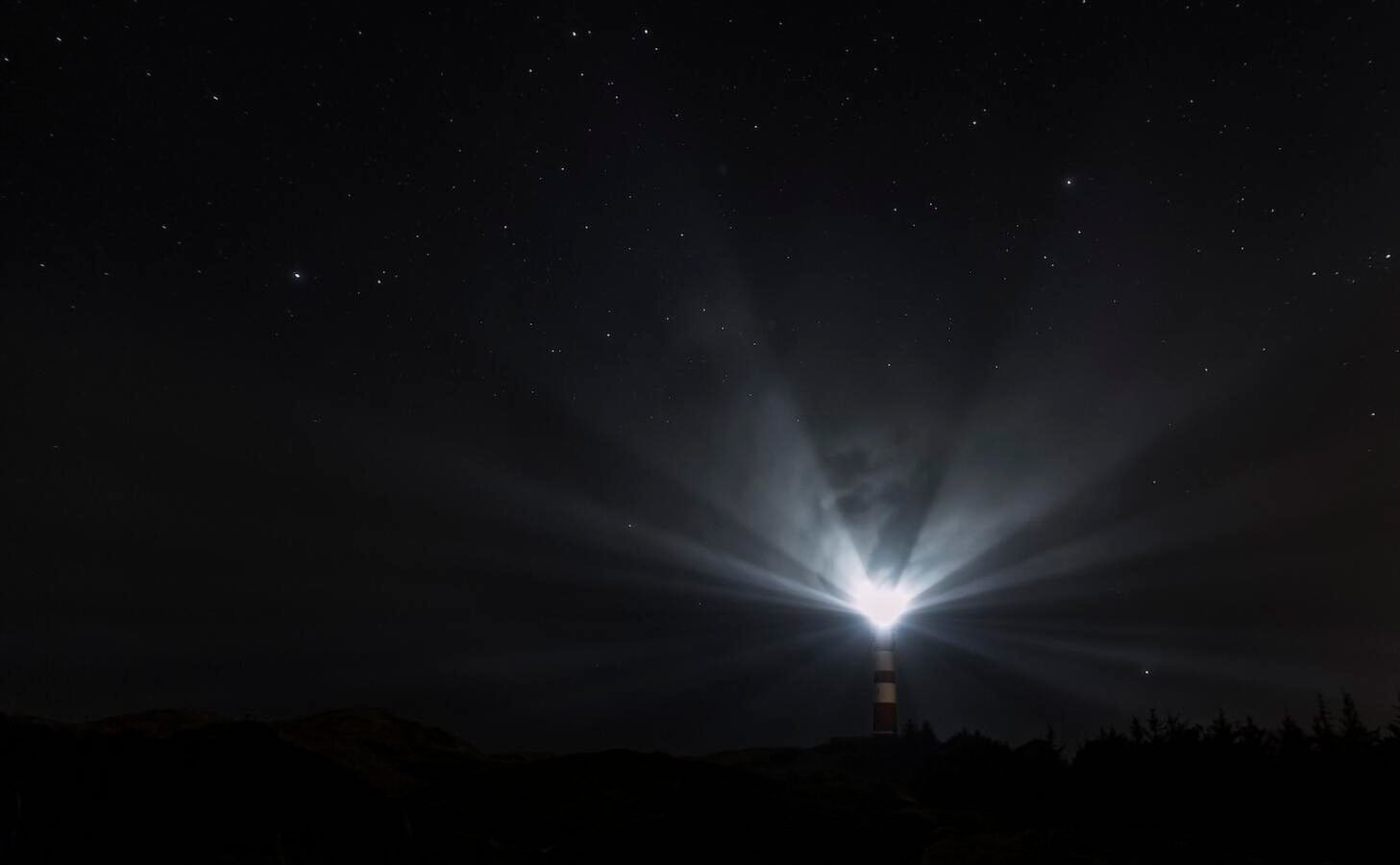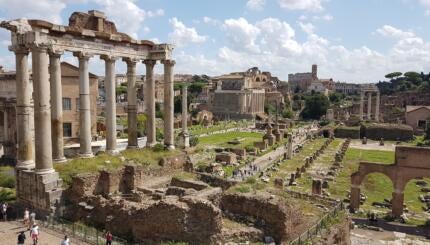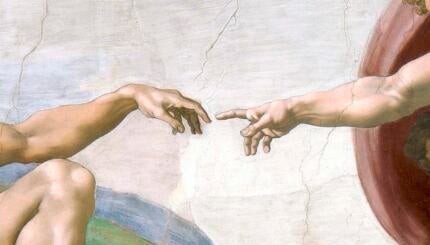A couple of years ago, my two-year-old son went through a stage of being terrified of the dark. One night, as I was sitting by his bed and trying to convince him for the umpteenth time that he was safe and there were no monsters lurking in the dark, he sat up, agitated, and pointed all over the room, declaring with his toddler lisp: “I’m scared of the darkness here and here and here.”
At my wits end, I decided to take a new tack. I said: “Honey, the darkness is filled with warm thoughts for you. It wants to give you a hug.”
Children are far more capable than adults at changing their entire worldview on a dime. As soon as my kid heard that the darkness wanted to give him a hug, he lay down, curling around his pillow with a big smile on his face. “Oh,” he said. “I don’t have to be scared. Now I know what the darkness is doing.”
What is the darkness doing? At a time when so many of us have an almost palpable sense that we’re stumbling forward into darkness, that we can’t see what’s ahead of us, what is the darkness doing for us? What happens in darkness? What is a loving darkness?
With your help, My Jewish Learning can provide endless opportunities for learning, connection and discovery.
In the Passover story, we’re told that the mitzrim (a word we usually translate as Egyptians) are punished with a plague of darkness for enslaving b’nai yisrael (a term we usually translate as Israelites). This is an unusual kind of darkness. We are told it is a tangible darkness, that it had a thickness to it, a density so intense it actually paralyzed the Egyptians. Meanwhile, the Israelites are able to see, clear as day.
It’s a striking image. The Egyptians and the Israelites lived in roughly the same geographical area. What was this strange darkness that paralyzed some but not others?
Some years ago, at a difficult moment in American politics, the Sikh activist Valerie Kaur asked: “What if this darkness is not the darkness of the tomb, but the darkness of the womb?” What shifts if we try this idea on? What shifts when we imagine that the darkness of the future is not a cause for anxiety and terror, but a cause for hope — even excitement? What shifts when we imagine that this is not the end of the line, but the emergence of something new and good?
It’s a challenging metaphorical shift. First, a lot of us have a phobia around wombs, and I’m not just talking about obvious misogynists. So many of us carry an internalized discomfort with uteruses and their awkward cramps and dripping blood and peculiar shape-shifting. It’s a discomfort so ingrained that some would rather crawl into a tomb than allow themselves to truly imagine what it might be like to be held by what our ancestors called el rachem, the Great Womb of Life.
It’s also hard to imagine that the darkness we’re facing now might be the darkness of the womb, because not every womb story is a joyful story. Some womb stories end in tragedy. A tomb might be painful, but at least it’s final. It’s over and done. With a womb, you remain in a constant state of vulnerability. You have to continuously stay open to the possibility of fresh disappointment.
It takes a strong stomach to look at the darkness of the future and see a womb, not a tomb. It takes a committed spiritual practice to be able to look at the opaque darkness of the future and see not just terror, but possibility, even hope — and maybe more than hope, maybe God Herself.
In the Torah, when Moses first encounters the Divine and is given the task of being a member of the team that will guide the Israelites from oppression to freedom, Moses asks: “When the people ask who sent me to free them, what name shall I give?”
God has so many names, but the one offered in that moment is an enigmatic one: ehyeh asher ehye. I will be what I will be.
It’s as if the ancestors are saying: The route from oppression to freedom is built by the challenging work of opening ourselves to the possibility that the unfolding future, the dark unknown of what’s to come, is itself a manifestation of the Divine. Despite the pain we have faced in the past, we free ourselves from slavery when we start to believe that the dark unknown might be brimming with nourishing Divine potential.
The Jewish mystics point out that the word for Egyptians, mitzrim, comes from an etymology that means “narrow.” We might say that when we look at the dark future from a narrow perspective, seeing only one claustrophobic linear possibility of what’s to come, then like the mitzrim, we become paralyzed by the darkness.
The word yisrael, usually translated as Israelite, means God-wrestler. We might say that when we look at the dark future like God wrestlers — not blindly optimistic, but recognizing Divinity within the dark unknown and wrestling with it, engaging in the messy practice of helping that future emerge from the tunnel of the dark womb — then even in the darkest moments, we can maintain a clear and piercing vision.
This Passover season, may we be blessed to befriend the darkness. May the pain that our world is experiencing be the chevlei moshiach — the womb spasms that precede the birth of liberation. And may we indeed be blessed to birth a better, more just, more loving world for us all.
This article initially appeared in My Jewish Learning’s Shabbat newsletter Recharge on April 6, 2024. To sign up to receive Recharge each week in your inbox, click here.



